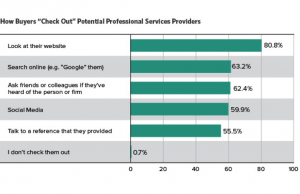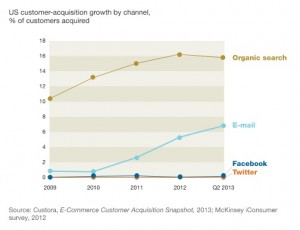Though I often jokingly say, “Nothing new has changed in sales in the last 500 years,” I recognize that, in fact, things have changed. The way you measure your sales organization and track stages in the sales process needs to adapt to how customers make buying decisions today.
I recently received a great question from Ken Carson, an owner and head of sales at Xybix. These guys are seeing explosive growth delivering innovative furniture workstations -911 call centers know their capabilities quite well. Ken and his team attended the Remarkable Growth Experience back in January to further integrate their sales, marketing, and customer experience. Ken knows that top performing businesses see sales and marketing as integrated pieces not silos. Never being one to rest on their past success, Ken asked me about how the stages of the sales process have changed for those who have embraced inbound marketing.
The Old School Selling Stages
Look in the documentation for popular CRM solutions like SugarCRM or SalesForce and you’ll see a list of sales stages that looks something like this paraphrased list from the Sugar CRM site:
- Prospecting– This opportunity needs to be qualified by a sales representative.
- Qualification– The sales rep determines if a sales opportunity exists.
- Needs Analysis – After determining that the prospect has interest, the sales representative now uncovers the prospect’s business problems.
- Value Proposition – After uncovering the prospect’s business problems, the representative maps products and/or services to the prospect’s business problems and describes the solution value.
- ID Decision Makers –Identify the decision makers necessary to close this opportunity.
- Perception Analysis –Prospect’s perceived value of the company’s solution.
- Proposal/Price Quote –Delivers the proposal.
- Negotiation/Review –Review and negotiate the proposal with the prospect.
- Closed Won – You won.
- Closed Lost – You lost.
What Changed
Your potential customers are spending hours researching solutions before you ever speak with them. This means that you have to produce enough content so that your customers can see you as a thought leader. This makes content marketing an integral part of how you sell, today. If you don’t link content marketing and sales, then you have one hand tied behind your back.
I’ve asked 3,000 executives to share the questions they ask when approving a purchase. It starts with “Why do we need it? What problem does it solve?” If you don’t start by addressing that question with your potential customer, you have a long and painful road ahead of you. If you want to attract the right customers to find you, create content that describes the problems you solve for your customers. Suggest ways to solve the challenge. Be sure to deliver value. Don’t include a commercial about your company. Savvy buyers will figure out how to find you.

New and Improved Selling Stages
Buyers have changed how they make purchase decisions. Those companies and sellers who adapt to these changes will thrive, and those who don’t will perish.
Sales stages in selling systems work most effectively when they help sellers focus on how you deliver solutions to customers. The stages in the process also need to be simple to understand and execute. To that end, the steps outlined below combine multiple steps into single steps, and take into consideration the role of content marketing in the sales process.
Once you have content, here are the steps you may want to include in your CRM.
- Qualification– Is there a good fit between the customer’s business challenge and our expertise? Can we deliver extraordinary results? What is the business impact of NOT solving the problem? In short, is the problem a big enough deal for the customer to justify a change, and are we the best people to help them reach their goal?
- Include All Parties –Who else is impacted by this issue and the eventual solution? How do we include them? If you don’t include these people early in the process, you can waste a ton of time.
- Define Results – What results is the prospect envisioning for the solution to make sense? How can we measure those results together? This replaces Perception Analysis – The salesperson and client do this step together. It shows you care about their results more so than the sale.
- Discuss Investment – Once you agree on the impact of not solving the issue and how you can measure the results, you are in a good place to discuss the investment. The first time the prospect sees a number CANNOT be in a proposal. A proposal or agreement should memorialize details that you have already discussed.
- Review –Review the details of the agreement with the prospect in advance.
- Proposal/Agreement –Deliver the agreement.
- Closed Won/Lost –If you follow this process, you’ll know the outcome before you submit the agreement.
Two Critical Components
Throughout the sales process, there are two critical components that will help engage and entice your prospective customers. These elements create a perpetual link between sales and content marketing:
- Share Content to Build Comfort – During the sales process, your prospect continues to get information. If you don’t have content to share, they are probably getting it from your competition. Your content allows your customer to experience your expertise and get comfortable with your approach.
- Open Their Eyes – Share content that talks about similar business challenges and how you have helped others address similar issues. Follow this approach for case studies that we share in Same Side Selling to help ensure that you entice their interest that leads to inquiries.
The way customers research and buy today demands changes in how you sell. No longer can you focus on just your actions. Today, the sales process has to be collaborative. It’s about finding the FIT early in the process, and then helping your prospect gain comfort with your ability to help them achieve results.
It’s Your Turn
How have you adapted your sales process? What areas do you find the most frustrating when it comes to how customers buy today?
Business Articles | Business 2 Community
(354)







